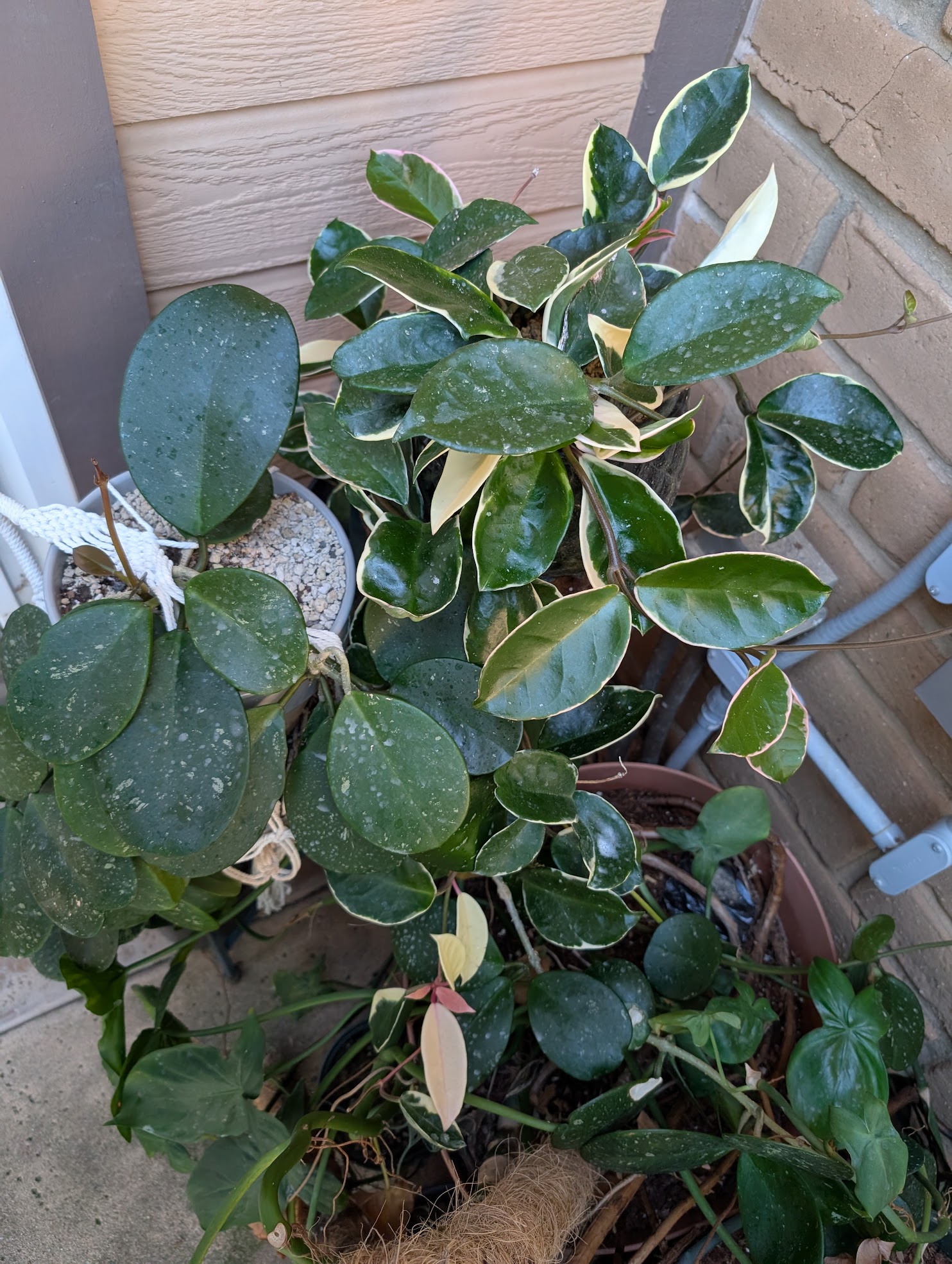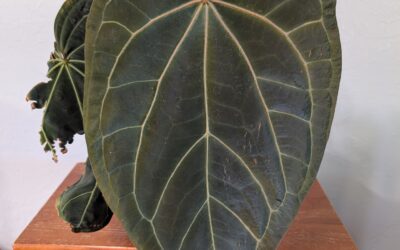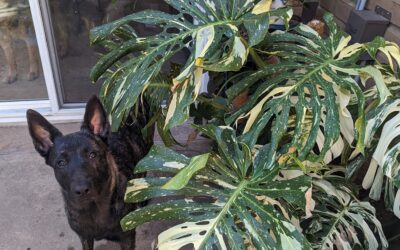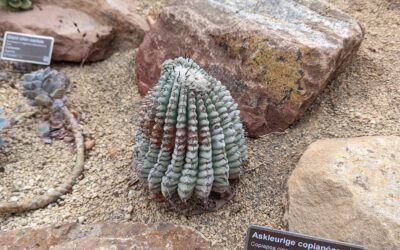In a post-COVID world, where the houseplant craze has died down and the bubble of insane prices has popped, it’s super accessible to grab some fun houseplants to try. Or you’re like me, and snagged a bunch as you came across them, and now you’re trying to figure out how to keep them all alive without losing your mind.
If you’re like me, you love the idea of many of these tropical houseplants, and you adore big, dramatic leaves…but you’re not necessarily the best at sticking to a great watering routine. You’re too busy, too forgetful, or just too lazy to be keeping up on some nonsense of checking the pots every day or two to see if they need water, much less remembering a complicated fertilization routine. So what can you do to grow some big, dramatic, and cool house plants without killing them and wasting your money?
I’ll tell you – at least, based on my own brand of lazy.
Note that my recommendations here are for plants outside of the norm or easy to find – so you won’t find your regular green pothos or green heart-leaf philodendrons listed here. That doesn’t make them bad candidates if you’re just starting out (they’re incredibly forgiving of everything, after all), but this is more about how to expand your collection with more “exotic” looking plants without just murdering them all.
Watering and Humidity
While it’s a bit much to lug all of your plants into your shower every time they need water, bringing them into the shower and tub every couple of months or so can go a long way. It’ll wash dirt off the leaves, flush the soil in the pot, and help any new leaves open.
If you’re aiming for plants that are a little more exotic, such as some of the more unusual Philodendrons, Anthuriums, or Monsteras, then bringing them into the shower for a good watering every month or two should be in your routine.
The nice thing about it is that you can often stretch the time until you water them again a bit longer than you would if you just used a watering can. The full soaking of the soil plus the drainage from the water running through makes the plants pretty happy, and gives them enough of a drink that they do well if allowed to dry a bit more before you water them again.
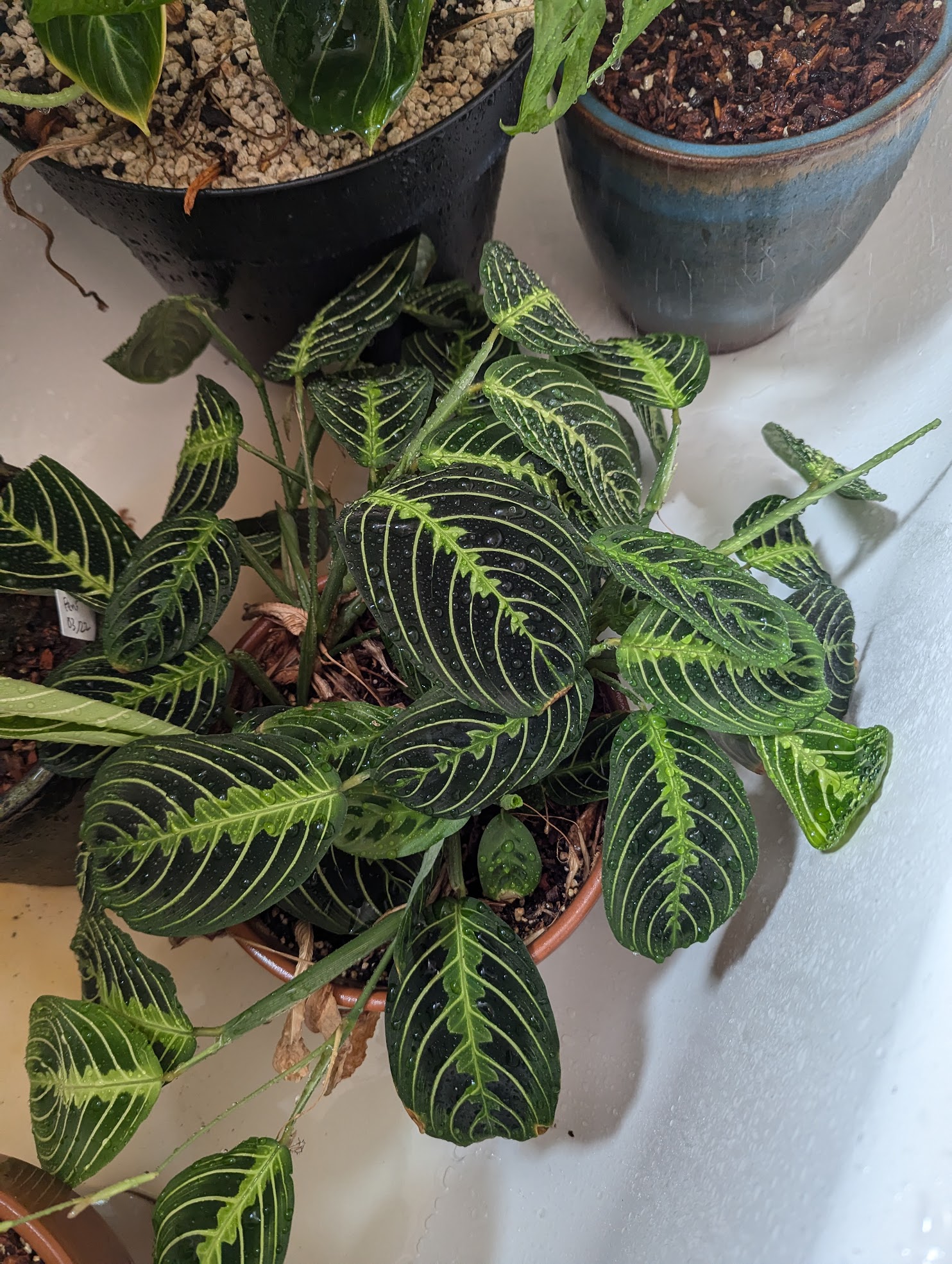
Watering deeply = less of a headache
It’s a little counter-intuitive that I’m suggesting the lazy way to grow your plants is to drag them into the shower, which is arguably more work, but stick with me.
When you only water them in their pots, and let them sit in the tray of water, they start to build up salts and residues from your tap water. Even filtered water will still have some traces, and you should absolutely avoid RO (reverse osmosis) water – that’ll actively pull nutrients out of the soil. If you’re using fertilizer, that will definitely end up sifting out to the bottom of the pot or into the water in your drip tray.
So when you water in the shower, you’re rinsing the soil thoroughly and allowing all the salts and minerals to flush out through the drainage hole. Plus, by letting the plants finish draining in the shower, that’s water not sitting in the drip tray and potentially scorching the roots at the bottom of the pot. The shower washes off the leaves, and the water on the leaves lets the plants exchange moisture that way in addition to the roots taking it in.
It’s a little mini spa-treatment for your plants, and trust me, they’ll do better and look nicer if you keep some shower days in the rotation. Just a few times a year, really. If you’re trying to grow more advanced plants but without dedicated humidifiers, adding the shower to your watering routine becomes even more important.
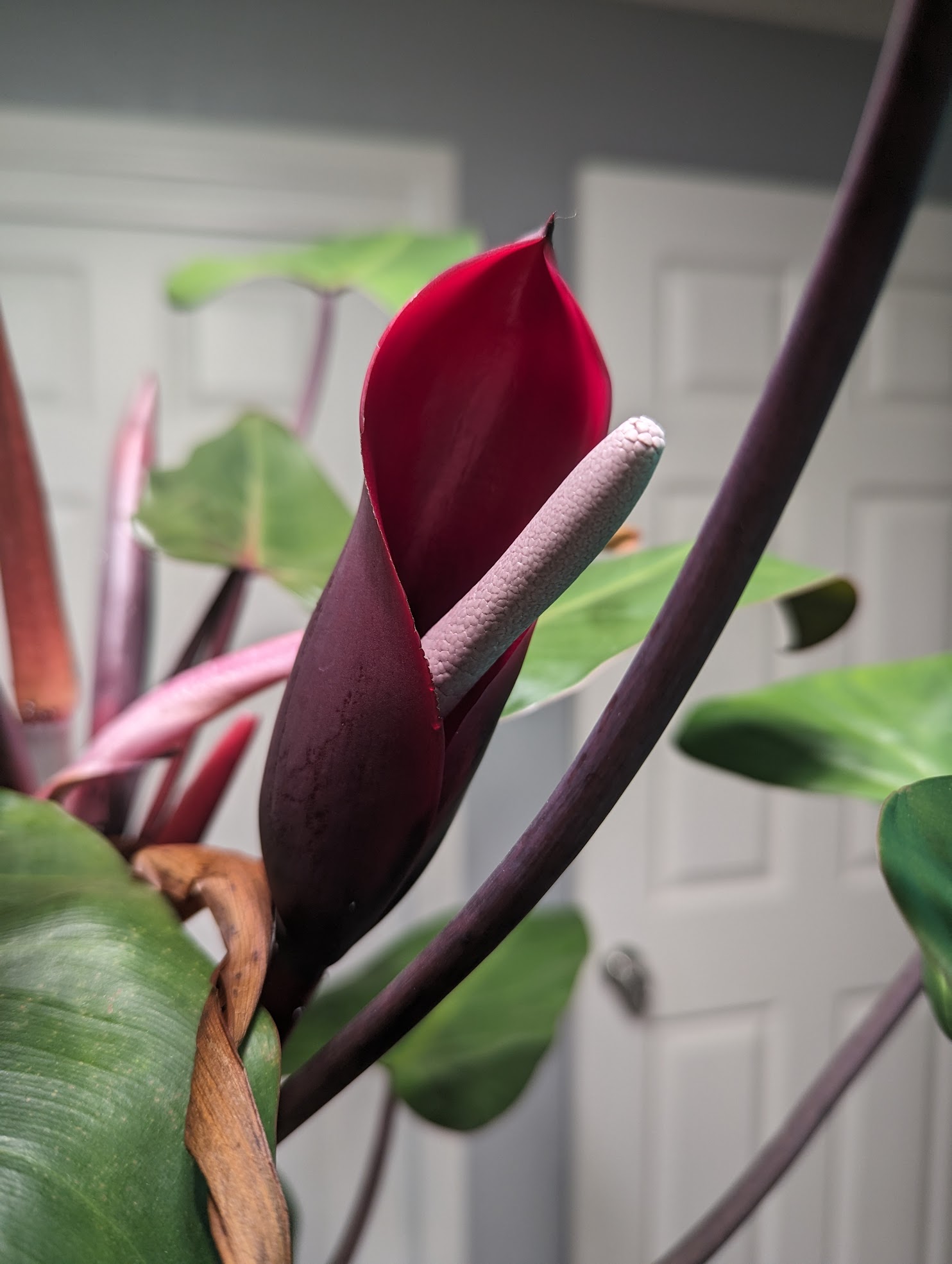
Bloom from my Philodendron “Red Emerald”
Soil and Fertilizer
Soil and fertilizer are pretty closely intertwined, and equally critical for your houseplants to thrive.
If you want to repot your plants as little as possible, you’ll want to add some soil amendments to your regular bag of houseplant soil. This keeps the soil from compacting, or turning into a dense brick that doesn’t drain well, and gives the roots plenty of air and space to move around in. This makes them happier, makes it easier to water them, and you overall have healthier, happier plants.
My typical mix is to mix about 1 part of drainage (orchid bark or pumice) with 2 parts houseplant soil. I prefer pumice over perlite as it stays put, and doesn’t float to the top of the soil when I water.
I like to add a layer of either pumice or orchid bark on top as a bit of top dressing; it helps keep the soil from drying out too quickly.
While increasing the drainage may seem like the exact opposite thing you want to do for thirsty tropical house plants, it’s actually super critical for them to thrive. Swampy, dank soil ends up rotting the roots and harboring pests and fungus very quickly, so you’ll end up with a sick or dying plant much faster if the soil doesn’t drain well.
Yes, you’ll need to water a little more often, but the plant will be significantly happier for it, I promise.
Fertilizing for Lazy People
I’ve recommended all kinds of fertilizer in the past, and have used several types to try and get the best growth from my beloved anthuriums and exotic houseplants.
You know what always happens?
I forget. I don’t remember when I last used the fertilizer, I don’t use it in the right ratios, I don’t feel like getting the measuring spoon, it’s too much hassle to go find the jug, blah blah blah.
Biggest game changer for beautiful leaves?
Houseplant fertilizer spikes. Follow the directions for quantity per pot, or at least loosely follow them, and then replace them every 2 or 3 months. My anthuriums finally started holding on to more than one leaf at a time, my variegated Alocasia frydek is making corms and even more leaves, and just about everything is doing much better. Make it easy on yourself and get the houseplant spikes.
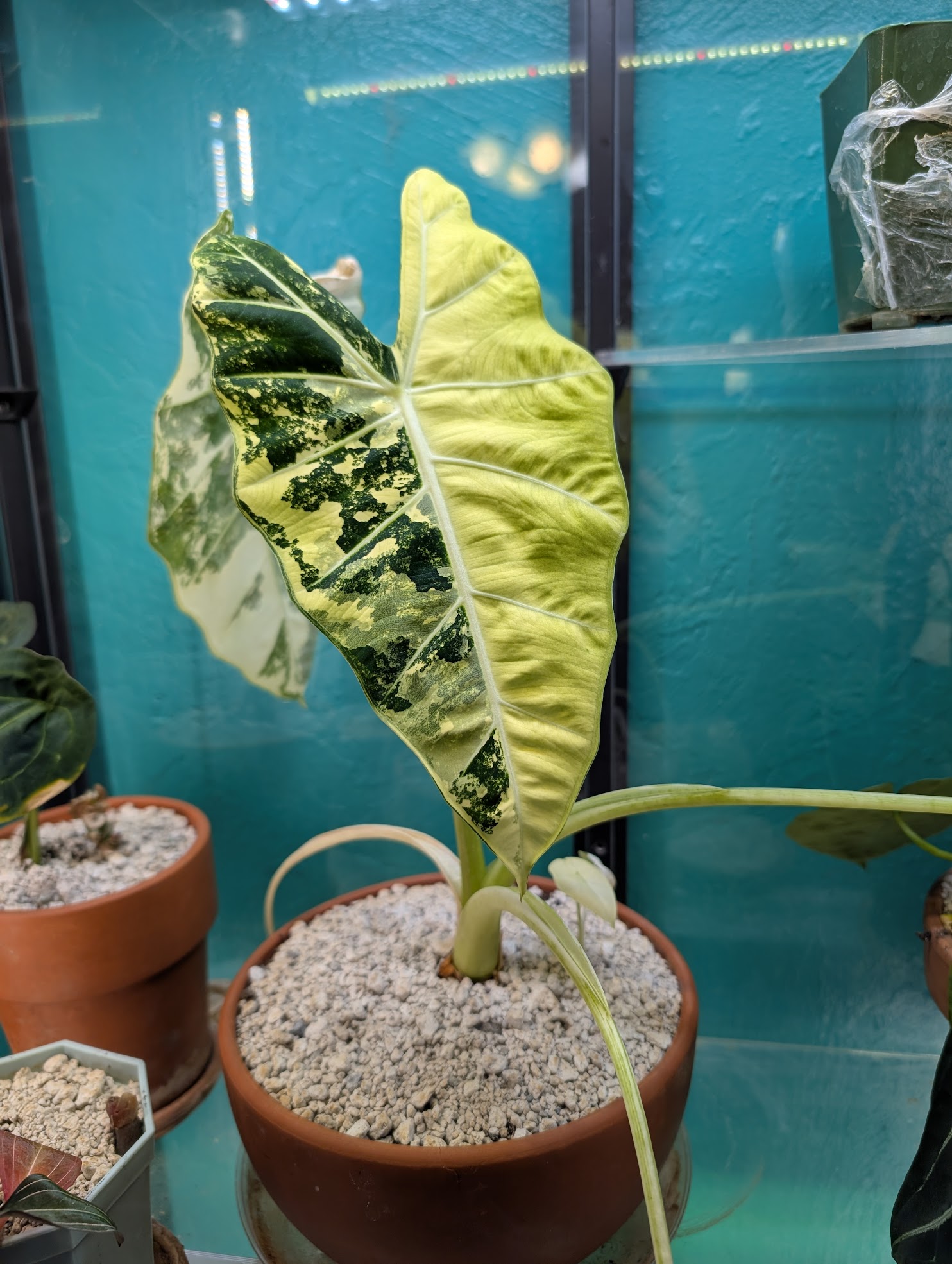
Lighting and Sunlight
You can’t get away from providing adequate light for your plants, but you can make it a little easier on yourself.
If you’re using sunlight from windows, watch your plants. If you’re seeing lots of vine or stem space between each leaf, the plant isn’t getting enough light. If you have a fenestrating species, such as the Monstera adansonii pictured here, look for good fenestrations – if it’s not making much, it needs more light.
Or just set up a nice grow light and plunk that thing on a timer. I set up a pendant light for this plant corner, and then put it on a timer, and stopped having to worry about windows. Don’t skimp on your lights and get the blue and purple kind, or those crummy little clip ons. They don’t produce enough light, they fail quickly, and they’re super flimsy.
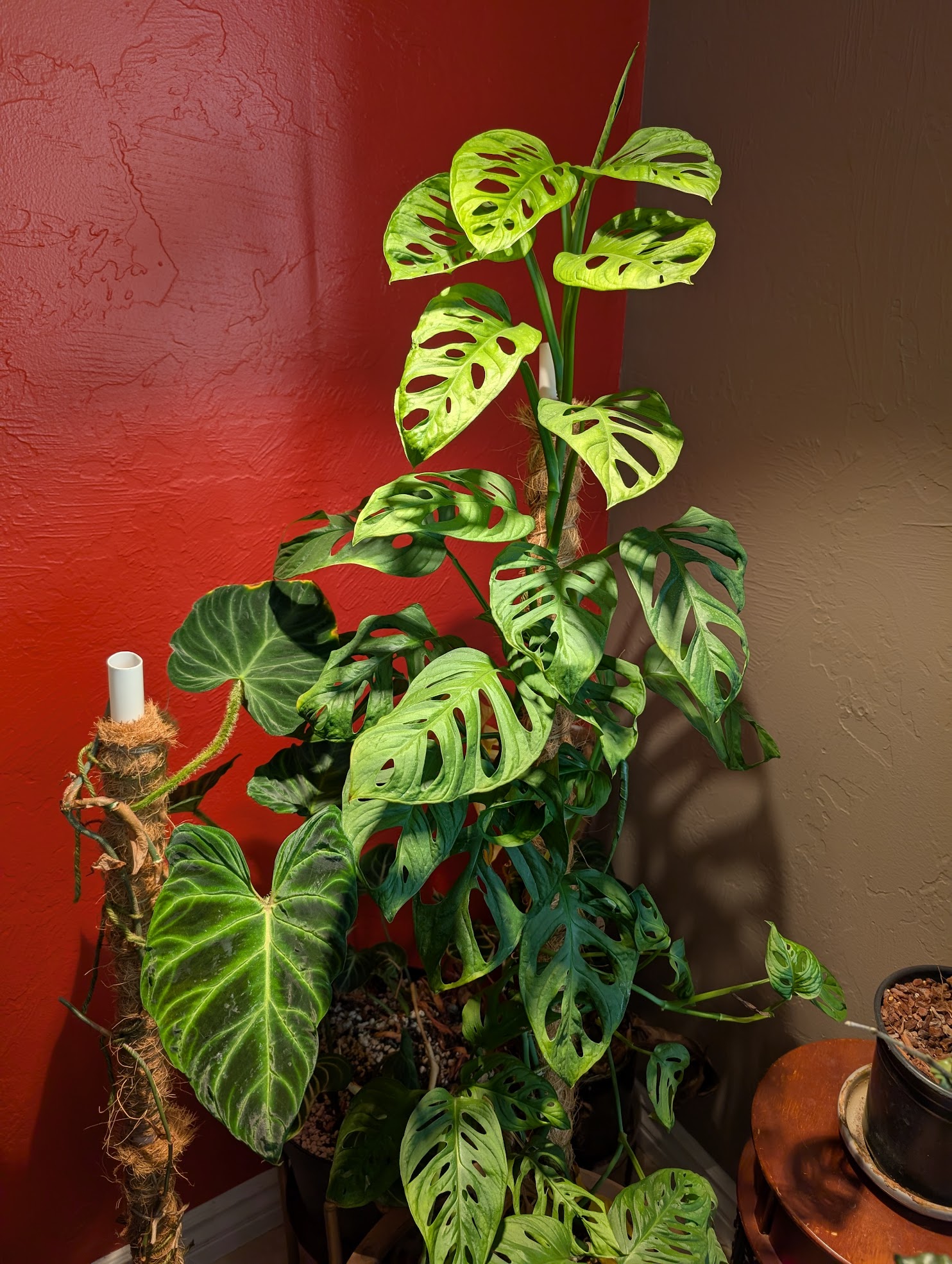
Get one good light, one good light fixture, and be done with it.
Try a floor lamp like this one, and just swap the lightbulb for a grow light. I have used these bulbs from Sansi and like them quite a bit; it’s worth the price tag to buy them just once and be done. Sansi does make floor lamps, but to be honest, they’re kind of hideous – but if you want to go that route, they’re linked here.
Add in a simple timer, and your plants will be set!
Pro tip if you’re not sleeping in the same room as your plants: save on electricity by setting your timer to turn on early in the morning, at off-peak times, and turn off in the afternoon when peak pricing goes into effect. Mine turn on at 2 am and off at 4 pm.
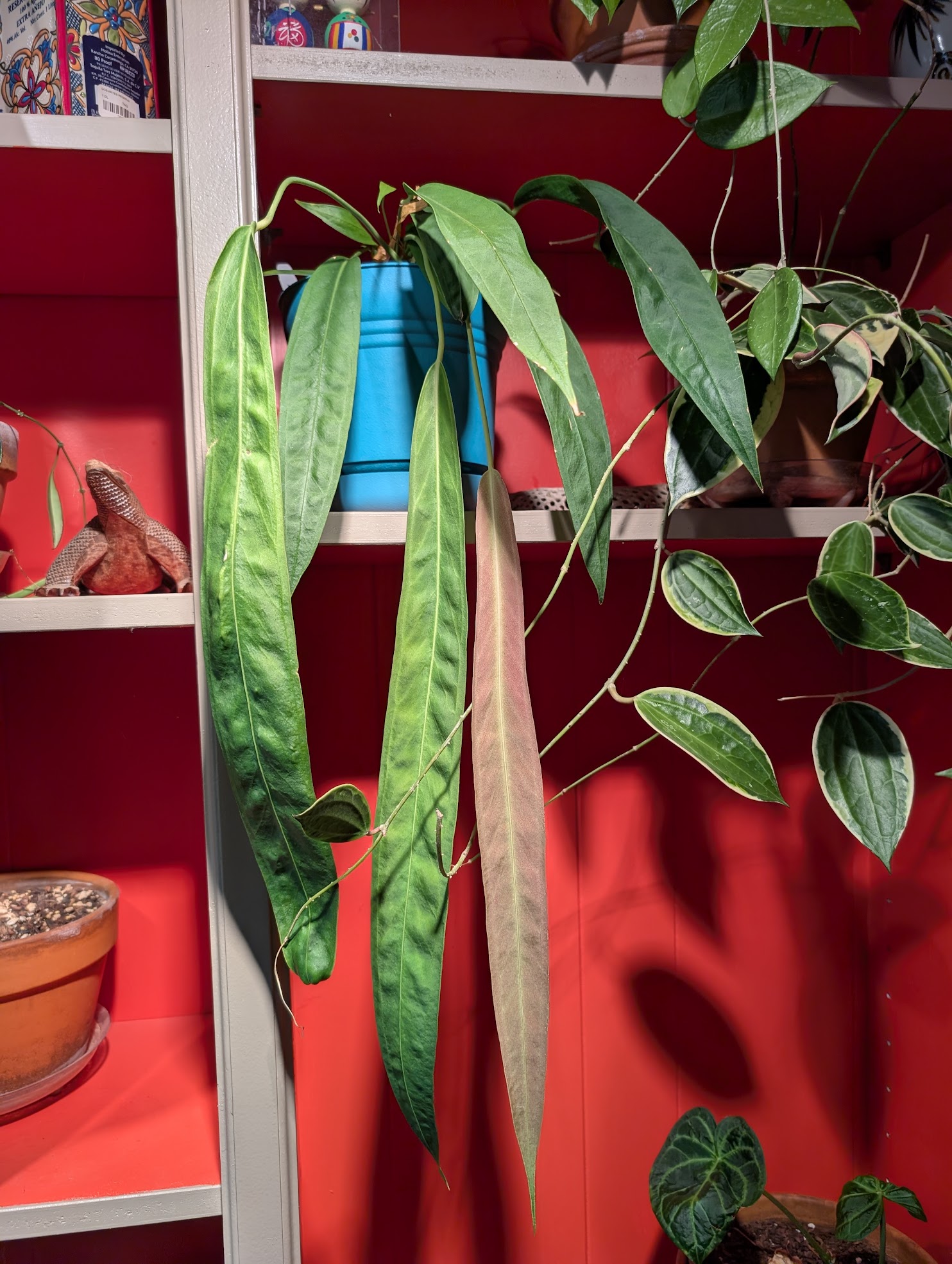
Get This, Not That
No matter what you do, some plants will be easier to grow than others, and some will be much more forgiving of lazy habits and forgetfulness than others.
So here’s a few suggestions on what to try if you like the look of some plants, but you’re worried you’ll kill them.
Long, Hanging Leaves
Avoid: Anthurium warocqueanum, Anthurium veitchii (sorry, there’s no easy mode for those)
Try these instead: Anthurium pendens, Anthurium wendlingeri (pictured left), or Anthurium pallidiflorum
Why?
The more dramatic looking Anthuriums are also enormous drama queens. They need high humidity and attention to truly thrive.
However, the non-velvet-leaf looking Anthuriums can do quite well in typical household humidity and growing conditions. My Anthurium pendens has been a delightful plant to grow, and far more forgiving than I expected. My Anthurium wendlingeri pictured above has also turned out to be easier to grow than expected. Both produce long, drooping leaves which are a beautiful reddish hue as they develop.
Special care or notes: These benefit considerably from a shower day on a regular basis, especially when new leaves are emerging. Inconsistent watering will show in wrinkled or wavy leaves (see the two older leaves at the front of the wendlingeri). Both produce long flowers, but the Anthurium wendlingeri flower is corkscrew shaped!
Velvet Leaf Anthuriums
These are some truly gorgeous plants, and just about everyone who starts getting into the fun houseplants ends up coveting their fair share of Anthuriums.
Avoid: Anthurium crystallinum, Anthurium “Ace of Spades”, and crystallinum hybrids
Maybe: Anthurium regale, Anthurium forgetii (and various clones)
Try these instead: Anthurium clarinervium, Anthurium magnificum
Why?
I suggest avoiding the species above because they very quickly crash and burn in low humidity (at least for me). I’ve had an Anthurium “Ace of Spades” (pictured right) for a few years now, but it’s always a challenge to keep the leaves looking nice and for the plant to thrive if it’s outside of my grow case.
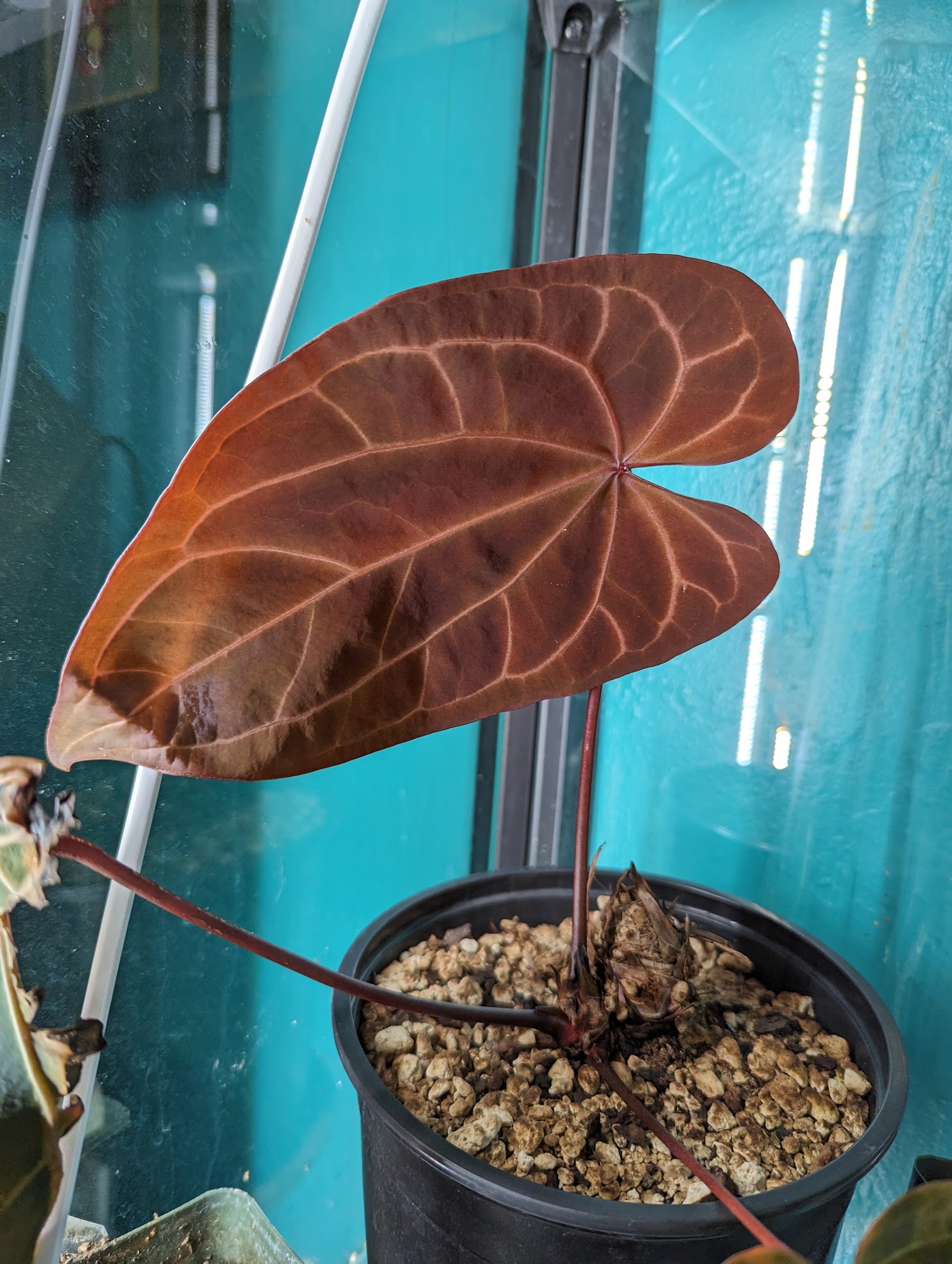
If the plants need a humidity chamber, dedicated air flow, or other special treatment – they’re cool and all, but not ideal if you’re looking for lazy-friendly plants.
My “maybes” are two species I’ve grown successfully outside of a grow case with reasonable success, but may not be easiest in your situation. Anthurium regale gets HUGE, and will need special attention paid to the lighting. It’s also happier with more humidity, but I’ve been able to get around that with mine by dragging it into the shower about once a month or so. Anthurium forgetii is far easier than one might expect, but for the leaves to look best, it also needs some shower time on a regular basis.
My two recommended species have grown outside a grow case, facing a window, and produced nice pretty leaves with minimal fuss. Anthurium clarinervium is flat out one of the easiest Anthuriums you can grow; I highly recommend it as a starter plant to Anthuriums!
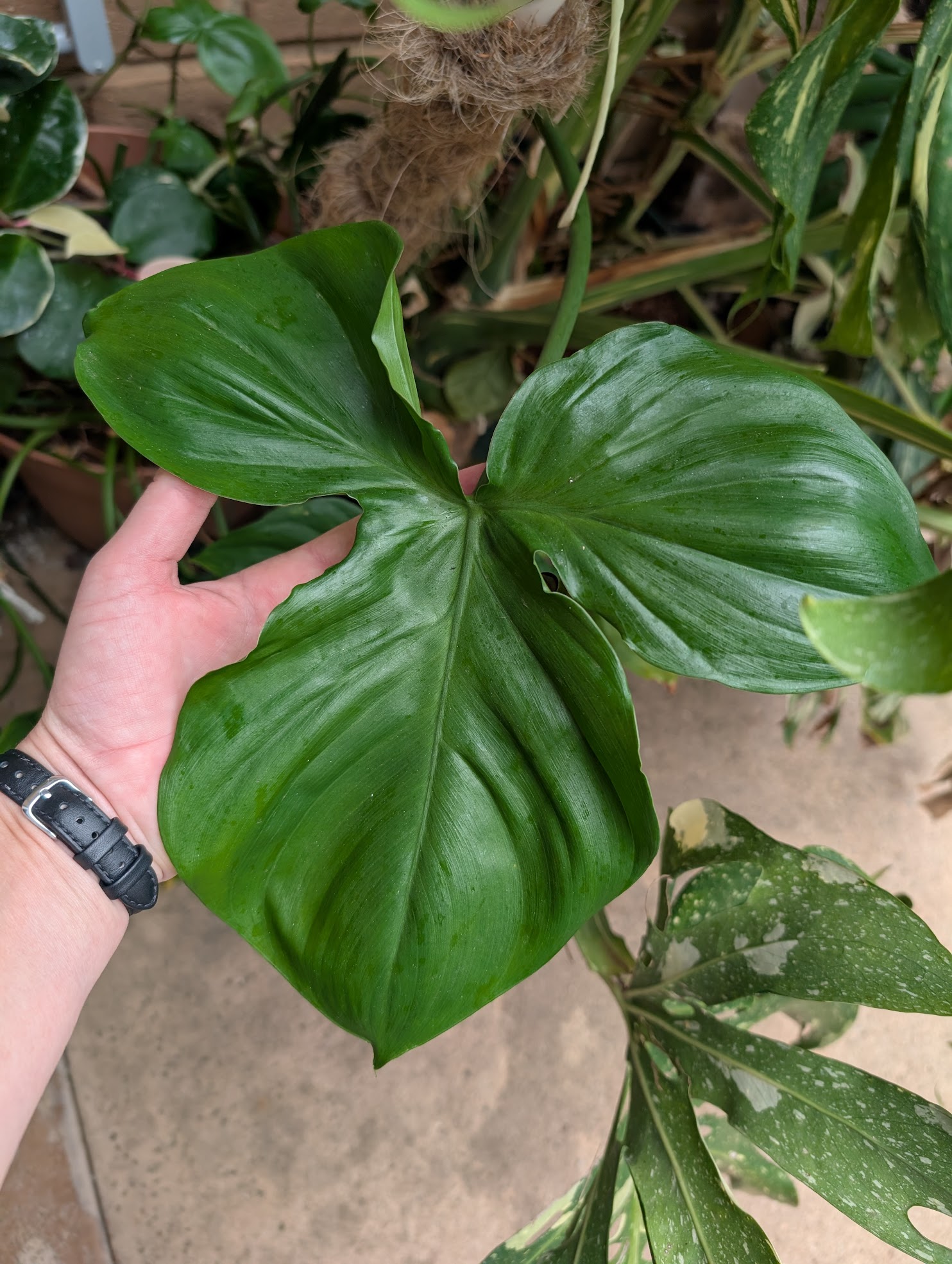
Vining and Climbing Plants
Just about any plant that grows as a hanging plant or vine will be quite happy to be provided a grow pole and giving the ability to climb.
Avoid: Monstera dubia, Hoya imbricata, Rhaphidophora “Hayi” and similar shingling species
Maybe: Monstera siltepecana, Ficus pumila (creeping fig), Pothos “Cebu Blue”, Scindapsus species
Try these instead: Philodendron camposportoanum (pictured left), Marantas, Philodendron “Micans”, Hoya carnosa, Hoya obovota, or Hoya publicalyx
Why?
If you’re looking for plants that will thrive even if you’re lazy, the true shingling species are not your jam. I’ve grown many of them, and once they’re happy, they get huge, they extend over the top of their growing support, and if they’re outdoors – those aerial roots get into EVERYTHING.
So while a species like Hoya imbricata is genuinely hard to grow, requiring high humidity, Monstera dubia is quite easy – but will become unruly quickly. It also needs very bright light to thrive, and overall is something of a challenge to get right.
The “maybes” are heavily dependent on your personal preferences. Monstera siltepecana is slow to grow, but very pretty, and has that green foliage with silver hues that’s gorgeous. It can be a little touch and go, though, so it’s not great as a beginner plant. The others are species that like to shingle, if they can, and especially like to climb. The pothos-like plants listed can be challenging to get their water needs right, which is why I haven’t listed them as excellent lazy-grower candidates.
The ones I’ve suggested instead are extremely easy to grow, forgiving of under and over watering, have flashy foliage and propagate easily. Philodendron camposportoanum is an extremely neat looking plant, producing velvety red new growth that hardens into bright green leaves – and it’s so easy! The larger and older it gets, the more it’ll develop those “ears” at the top of the leaves. I’m surprised I don’t see it available more often, but that might just be a result of that impossible to remember name.
Big Dramatic Foliage Plants
Looking for something big, gorgeous, and dramatic? These will be great candidates for floor plants that get some height to them and will have eye-catching leaves.
Avoid: Philodendron gloriosum, Philodendron melanochrysum, Philodendron gigas
Maybe: Philodendron verrucosum, Alocasia frydek, Monstera deliciosa
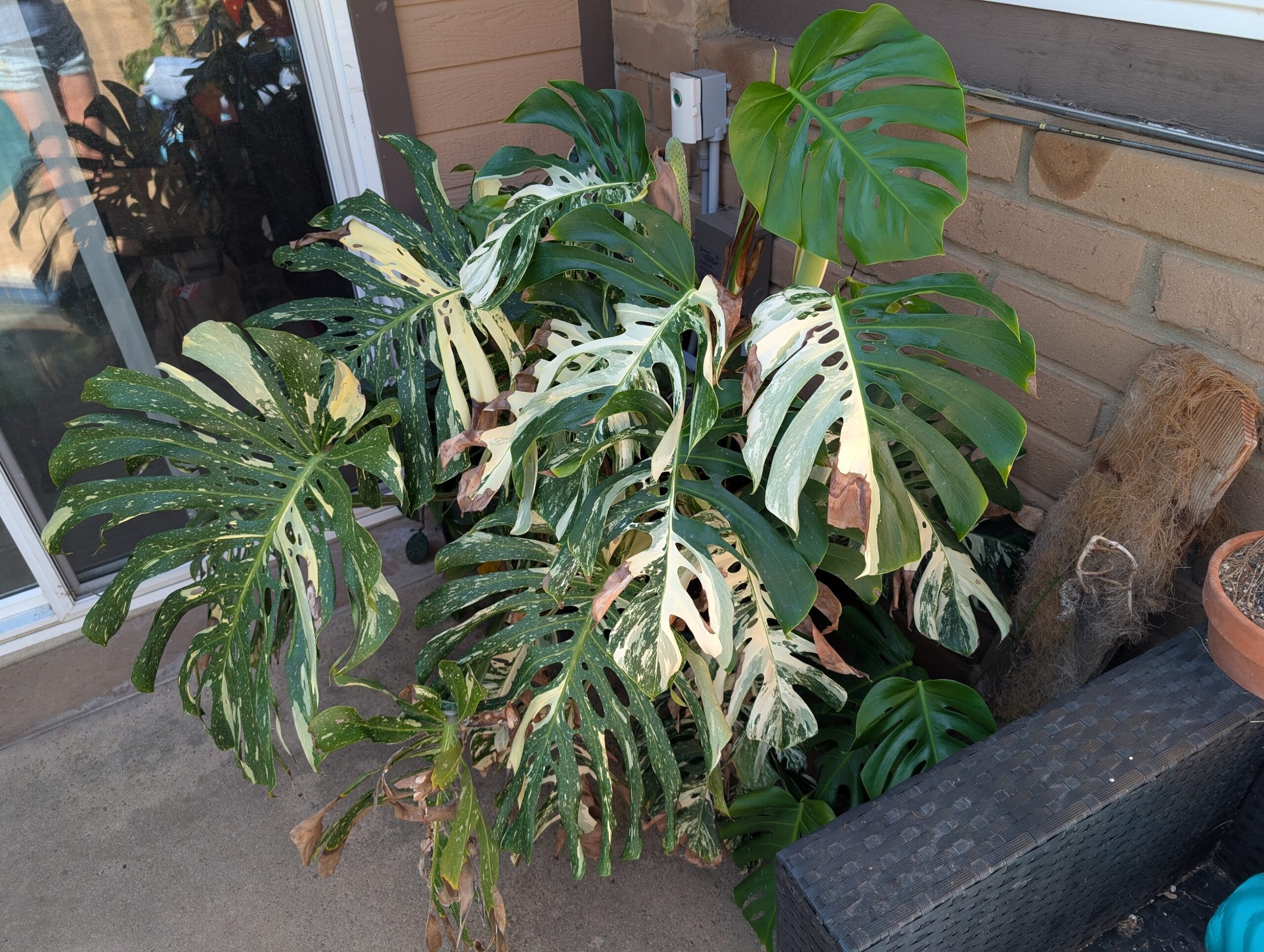
Try these instead: Alocasia “Regal Shield”, Philodendron mamei, Philodendron erubescens (Emerald Red and friends), Monstera adansonii*, Alocasia odora
* Monstera adansonii works extremely well as a big statement plant if you provide it a grow pole and let it climb.
Why?
My “Avoids” aren’t impossible to grow, but they are all species that need high humidity to thrive, and are extremely unforgiving if you forget about it. My Philodendron gigas is fairly easy to grow and propagate, but it gets big quickly, absolutely must be climbing, and is extremely sensitive to cold temperatures.
The “Maybes” probably seemed odd to you – why would I put Monstera deliciosa over here? These all get big, or have specific needs. I’ve had a relatively easy time growing Philodendron verrucosum in regular household humidity, but it also needs to climb, so it’ll require a grow pole. Monstera deliciosa gets HUGE. It’s also very light hungry, making it hard to keep them happy and manageable indoors. Alocasia frydek is gorgeous, but hard to keep looking nice – they always turn to face their light source. Great if you’re using artificial lights, annoying if they’re by a window.
The rest are all big, dramatic foliage plants that are quite easy to grow and manage. The Alocasias can get quite large, and will go dormant in winter – but that’s manageable (and convenient, so you won’t have to water them year-round). Philodendron mamei is more of a ground-creeping plant, ideal for placing on a plant stand to sprawl out, but boy is it beautiful as it gets some size to it.
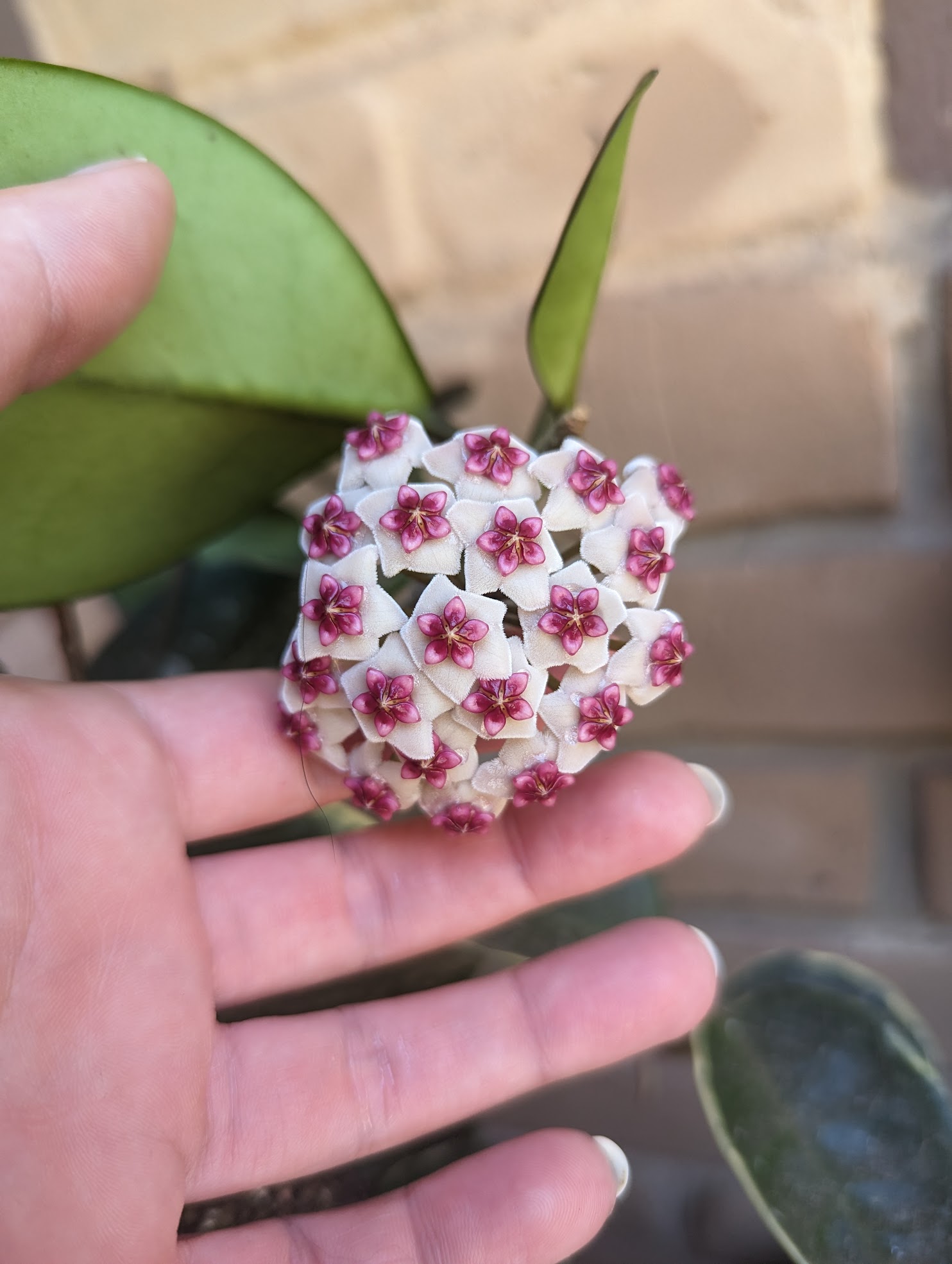
Other Jewels to Consider
There’s a handful of other species that work well for just about everyone, and are easy to grow and maintain. Where there’s a tip for easier care, I’ve included it.
Alocasia “Black Velvet” – Beautiful little jewel alocasia that is significantly easier to grow than some of the other species out there. I had the best success using a self-watering pot, and letting it dry out before filling it back up again.
Sansiverias – just about any sansiveria is a great houseplant candidate. They do appreciate brighter light than their labels typically recommend, but they can go ages with little to no water. Select the foliage type and color you like best! Fun notable types to keep an eye out for:
- Sansiveria masoniana, or whale fin plant – enormous leaves up to 3′ tall
- Sansiveria kirkii “Coppertone” – beautiful rusty copper colored leaves
- Sansiveria trifasciata “Moonshine” – pale frosty colored leaves with green edging
- Sansiveria cylindrica “Boncel” – cute little round leaves, like a starfish
- Sansiveria suffruticosa “Frosty Spears” – a personal favorite, long cylindrical leaves with frosty dusting
Peperomia prostrata “String of Turtles” – I grow these easily in my vivarium, but have also had fantastic success with them in just about any relatively shallow pot that makes it easy for them to stay watered. You can tell if they have enough light based on how pronounced or visible the pattern on each leaf is.
Zamioculcas zamiifolia “ZZ Plant” – Slow growing and nearly impossible to kill. They’re basically a bulb, and they shoot out a “branch” with leaves along it – each one of those is done growing, and won’t get larger. Very predicatable to cultivate and simple. Ideal in very low light placements, but should be kept pretty dry in that case.
Thanks for reading this far, and I hope this was helpful! Don’t be afraid to try new species or new methods. But…while you’re learning, it might be kinder to your pocketbook to choose lower-cost options or plants you’re sure will thrive in your care.
Good luck!

